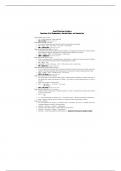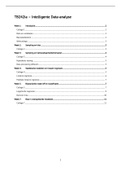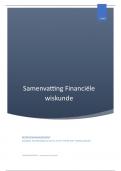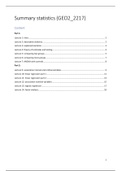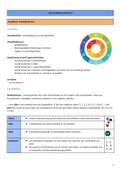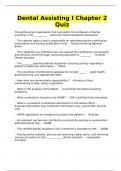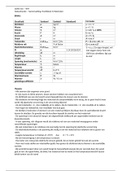Overview calculus midterm:
• Lecture 1a: Inverse Functions and Logarithms (§1.5)
• Lecture 1b: Limits and continuity (§2.2, §2.3 and §2.5)
• Lecture 1c: Limits at infinity (§2.6)
• Lecture 2a: The Chain Rule and Implicit differentiation (§3.4 and §3.5)
• Lecture 2b: Linearization and differentials (§3.10)
• Lecture 2c: L’Hospital’s Rule (§4.4)
• Lecture 3a: The Substitution Rule (§5.5)
• Lecture 3b: Integration by parts (§7.1)
• Lecture 3c: Improper Integrals (§7.8)
• Lecture 4a: Sequences (§11.1)
• Lecture 4b: Series (§11.2)
• Lecture 4c: The Integral Test and Estimates of Sums (§11.3) + Alternating series (§11.5)
• Lecture 5a: Absolute Convergence and the Ration and Root Tests (§11.6, skip Root test)
• Lecture 5b: Power Series (§11.8)
• Lecture 6a: Functions as power series (§11.9)
• Lecture 6b: Taylor series (§11.10)
• Lecture 7a: Complex numbers part 1 (Appendix H)
• Lecture 7b: Complex numbers part 2, vectors and dot product (Appendix H, §12.2, §12.3)
• Lecture 7c: Functions of several variables (§14.1)
• Lecture 8a: Partial derivatives and linearization (§14.3, §14.4)
• Lecture 8b: The directional derivative (§14.6)
• Lecture 8c: Minimum and maximum values (§14.7)
• Lecture 9a: Double integrals over rectangles (§15.1)
• Lecture 9b: Double integrals over simple regions (§15.2)
,Lecture 1a: Inverse Functions and Logarithms (§1.5)
• Find the maximal domain and range of a function.
• Find the inverse of a one-to-one function.
• Simplify expressions involving (inverses of) trigonometric functions.
Definition of a function: a map from one set (𝐴) to another (𝐵) denoted by 𝑓: 𝐴 → 𝐵
A function is a relation from 𝐴 (domain) to 𝐵 (codomain) that satisfies 2 conditions.
1. Every element of 𝐴 has to map to an element of 𝐵.
2. No element of 𝐴 maps to more than one element of 𝐵.
A function 𝑓 is called a one-to-one function if it never takes on the same value twice; that is,
𝑥! ≠ 𝑥" → 𝑓(𝑥! ) ≠ 𝑓(𝑥" )
𝑓(𝑥! ) = 𝑓(𝑥" ) → 𝑥! = 𝑥"
A function is one-to-one if and only if no horizontal line intersects the graph more than once.
Let 𝑓 be a one-to-one function with domain 𝐴 and range 𝐵. Then its inverse function 𝑓 #! has
domain 𝐵 and range 𝐴 and is defined by 𝑓 #! (𝑦) = 𝑥 ↔ 𝑓(𝑥) = 𝑦 for any 𝑦 in 𝐵.
The graph of 𝑓 #! is obtained by reflecting the graph of 𝑓 about the line 𝑦 = 𝑥
Domain of 𝑓 #! = range of 𝑓
Range of 𝑓 #! = domain of 𝑓
How to find the inverse function of a one-to-one function 𝑓
1. Write 𝑦 = 𝑓(𝑥)
2. Solve this equation for 𝑥 in terms of 𝑦 (if possible)
3. To express 𝑓 #! as a function of 𝑥, interchange 𝑥 and 𝑦.
To find the inverse trigonometric functions we have to restrict the domains of the trigonometric
functions so that they become one-to-one.
Function Inverse Restricted domain
sin(𝑥) = 𝑦 𝑠𝑖𝑛 #! (𝑦)
= arcsin (𝑦) = 𝑥 𝜋 𝜋
− ≤𝑥≤
2 2
cos(𝑥) = 𝑦 𝑐𝑜𝑠 #! (𝑦) = arccos(𝑦) = 𝑥 0≤𝑥≤𝜋
tan(𝑥) = 𝑦 𝑡𝑎𝑛#! (𝑦) = arctan(𝑦) = 𝑥 𝜋 𝜋
− <𝑥<
2 2
Kind of questions:
!
1. What is 𝑎𝑟𝑐𝑜𝑠(− ")
$
2. Simplify cos (arcsin D%E)
3. Find a rational expression of cos (arctan(𝑥))
, Lecture 1b: Limits and Continuity (§2.2, §2.3, §2.5)
• Evaluate a limit of a function at a point.
• Apply rules of calculation for limits (in particular the Squeeze Theorem)
Suppose 𝑓(𝑥) is defined when 𝑥 is near the number 𝑎. Then we write 𝐥𝐢𝐦 𝒇(𝒙) = 𝑳 and say “the
𝒙→𝒂
limit of 𝑓(𝑥), as 𝑥 approaches 𝑎, equals 𝐿” if we can make the values of 𝑓(𝑥) arbitrarily close to 𝐿
by restricting 𝑥 to be sufficiently close to 𝑎, but not equals to 𝑎.
We write 𝐥𝐢𝐦! 𝒇(𝒙) = 𝑳 and say the limit of 𝑓(𝑥) as 𝑥 approaches 𝑎 from the left is equal to 𝐿 if we
𝒙→𝒂
can make the values of 𝑓(𝑥) arbitrarily close to 𝐿 by taking 𝑥 to be sufficiently close to 𝑎 with 𝑥 less
than 𝑎.
We write 𝐥𝐢𝐦" 𝒇(𝒙) = 𝑳 and say the limit of 𝑓(𝑥) as 𝑥 approaches 𝑎 from the right is equal to 𝐿 if
𝒙→𝒂
we can make the values of 𝑓(𝑥) arbitrarily close to 𝐿 by taking 𝑥 to be sufficiently close to 𝑎 with 𝑥
greater than 𝑎.
lim 𝑓(𝑥) = 𝐿 if and only if lim! 𝑓(𝑥) = 𝐿 and lim" 𝑓(𝑥) = 𝐿
)→* )→* )→*
Suppose that lim 𝑓(𝑥) and lim 𝑔(𝑥) exist. Then
)→* )→*
1. lim P𝑓(𝑥) + 𝑔(𝑥)R = lim 𝑓(𝑥) + lim 𝑔(𝑥)
)→* )→* )→*
2. lim P𝑓(𝑥) − 𝑔(𝑥)R = lim 𝑓(𝑥) − lim 𝑔(𝑥)
)→* )→* )→*
3. lim 𝑐𝑓(𝑥) = 𝑐 lim 𝑓(𝑥)
)→* )→*
4. lim 𝑓(𝑥)𝑔(𝑥) = lim 𝑓(𝑥) ∗ lim 𝑔(𝑥)
)→* )→* )→*
+()) /01 +())
5. lim .()) = #→%
/01 .())
if lim 𝑔(𝑥) ≠ 0
)→* #→%
)→*
If 𝑓 is a polynomial or a rational function and 𝑎 is in the domain of 𝑓, then lim 𝑓(𝑥) = 𝑓(𝑎)
)→*
The Squeeze Theorem: if 𝑓(𝑥) ≤ 𝑔(𝑥) ≤ ℎ(𝑥) when 𝑥 is near 𝑎 (except possibly at 𝑎) and
lim 𝑓(𝑥) = lim ℎ(𝑥) = 𝐿 then lim 𝑔(𝑥) = 𝐿
)→* )→* )→*
A function 𝑓 is continuous at a number 𝑎 if lim 𝑓(𝑥) = 𝑓(𝑎), this requires three things.
)→*
1. 𝑓(𝑎) is defined (that is, 𝑎 is in the domain of 𝑓)
2. lim 𝑓(𝑥) exists
)→*
3. lim 𝑓(𝑥) = 𝑓(𝑎)
)→*
Lecture 1c: Limits at Infinity (§2.6)
• Evaluate a limit of a function at ±∞.
• Find horizontal and vertical asymptotes of a function.
Let 𝑓 be a function defined on some interval (𝑎, ∞). Then lim 𝑓(𝑥) = 𝐿 means that the values of
)→2
𝑓(𝑥) can be made arbitrarily close to 𝐿 by requiring 𝑥 to be sufficiently large.
Let 𝑓 be a function defined on some interval (−∞, 𝑎). Then lim 𝑓(𝑥) = 𝐿 means that the values of
)→#2
𝑓(𝑥) can be made arbitrarily close to 𝐿 by requiring 𝑥 to be sufficiently large negative.
The line 𝑦 = 𝐿 is called a horizontal asymptote of the curve 𝑦 = 𝑓(𝑥) if either lim 𝑓(𝑥) = 𝐿
)→2
or lim 𝑓(𝑥) = 𝐿
)→#2
The Squeeze Theorem also applies on limits to infinity.
• Lecture 1a: Inverse Functions and Logarithms (§1.5)
• Lecture 1b: Limits and continuity (§2.2, §2.3 and §2.5)
• Lecture 1c: Limits at infinity (§2.6)
• Lecture 2a: The Chain Rule and Implicit differentiation (§3.4 and §3.5)
• Lecture 2b: Linearization and differentials (§3.10)
• Lecture 2c: L’Hospital’s Rule (§4.4)
• Lecture 3a: The Substitution Rule (§5.5)
• Lecture 3b: Integration by parts (§7.1)
• Lecture 3c: Improper Integrals (§7.8)
• Lecture 4a: Sequences (§11.1)
• Lecture 4b: Series (§11.2)
• Lecture 4c: The Integral Test and Estimates of Sums (§11.3) + Alternating series (§11.5)
• Lecture 5a: Absolute Convergence and the Ration and Root Tests (§11.6, skip Root test)
• Lecture 5b: Power Series (§11.8)
• Lecture 6a: Functions as power series (§11.9)
• Lecture 6b: Taylor series (§11.10)
• Lecture 7a: Complex numbers part 1 (Appendix H)
• Lecture 7b: Complex numbers part 2, vectors and dot product (Appendix H, §12.2, §12.3)
• Lecture 7c: Functions of several variables (§14.1)
• Lecture 8a: Partial derivatives and linearization (§14.3, §14.4)
• Lecture 8b: The directional derivative (§14.6)
• Lecture 8c: Minimum and maximum values (§14.7)
• Lecture 9a: Double integrals over rectangles (§15.1)
• Lecture 9b: Double integrals over simple regions (§15.2)
,Lecture 1a: Inverse Functions and Logarithms (§1.5)
• Find the maximal domain and range of a function.
• Find the inverse of a one-to-one function.
• Simplify expressions involving (inverses of) trigonometric functions.
Definition of a function: a map from one set (𝐴) to another (𝐵) denoted by 𝑓: 𝐴 → 𝐵
A function is a relation from 𝐴 (domain) to 𝐵 (codomain) that satisfies 2 conditions.
1. Every element of 𝐴 has to map to an element of 𝐵.
2. No element of 𝐴 maps to more than one element of 𝐵.
A function 𝑓 is called a one-to-one function if it never takes on the same value twice; that is,
𝑥! ≠ 𝑥" → 𝑓(𝑥! ) ≠ 𝑓(𝑥" )
𝑓(𝑥! ) = 𝑓(𝑥" ) → 𝑥! = 𝑥"
A function is one-to-one if and only if no horizontal line intersects the graph more than once.
Let 𝑓 be a one-to-one function with domain 𝐴 and range 𝐵. Then its inverse function 𝑓 #! has
domain 𝐵 and range 𝐴 and is defined by 𝑓 #! (𝑦) = 𝑥 ↔ 𝑓(𝑥) = 𝑦 for any 𝑦 in 𝐵.
The graph of 𝑓 #! is obtained by reflecting the graph of 𝑓 about the line 𝑦 = 𝑥
Domain of 𝑓 #! = range of 𝑓
Range of 𝑓 #! = domain of 𝑓
How to find the inverse function of a one-to-one function 𝑓
1. Write 𝑦 = 𝑓(𝑥)
2. Solve this equation for 𝑥 in terms of 𝑦 (if possible)
3. To express 𝑓 #! as a function of 𝑥, interchange 𝑥 and 𝑦.
To find the inverse trigonometric functions we have to restrict the domains of the trigonometric
functions so that they become one-to-one.
Function Inverse Restricted domain
sin(𝑥) = 𝑦 𝑠𝑖𝑛 #! (𝑦)
= arcsin (𝑦) = 𝑥 𝜋 𝜋
− ≤𝑥≤
2 2
cos(𝑥) = 𝑦 𝑐𝑜𝑠 #! (𝑦) = arccos(𝑦) = 𝑥 0≤𝑥≤𝜋
tan(𝑥) = 𝑦 𝑡𝑎𝑛#! (𝑦) = arctan(𝑦) = 𝑥 𝜋 𝜋
− <𝑥<
2 2
Kind of questions:
!
1. What is 𝑎𝑟𝑐𝑜𝑠(− ")
$
2. Simplify cos (arcsin D%E)
3. Find a rational expression of cos (arctan(𝑥))
, Lecture 1b: Limits and Continuity (§2.2, §2.3, §2.5)
• Evaluate a limit of a function at a point.
• Apply rules of calculation for limits (in particular the Squeeze Theorem)
Suppose 𝑓(𝑥) is defined when 𝑥 is near the number 𝑎. Then we write 𝐥𝐢𝐦 𝒇(𝒙) = 𝑳 and say “the
𝒙→𝒂
limit of 𝑓(𝑥), as 𝑥 approaches 𝑎, equals 𝐿” if we can make the values of 𝑓(𝑥) arbitrarily close to 𝐿
by restricting 𝑥 to be sufficiently close to 𝑎, but not equals to 𝑎.
We write 𝐥𝐢𝐦! 𝒇(𝒙) = 𝑳 and say the limit of 𝑓(𝑥) as 𝑥 approaches 𝑎 from the left is equal to 𝐿 if we
𝒙→𝒂
can make the values of 𝑓(𝑥) arbitrarily close to 𝐿 by taking 𝑥 to be sufficiently close to 𝑎 with 𝑥 less
than 𝑎.
We write 𝐥𝐢𝐦" 𝒇(𝒙) = 𝑳 and say the limit of 𝑓(𝑥) as 𝑥 approaches 𝑎 from the right is equal to 𝐿 if
𝒙→𝒂
we can make the values of 𝑓(𝑥) arbitrarily close to 𝐿 by taking 𝑥 to be sufficiently close to 𝑎 with 𝑥
greater than 𝑎.
lim 𝑓(𝑥) = 𝐿 if and only if lim! 𝑓(𝑥) = 𝐿 and lim" 𝑓(𝑥) = 𝐿
)→* )→* )→*
Suppose that lim 𝑓(𝑥) and lim 𝑔(𝑥) exist. Then
)→* )→*
1. lim P𝑓(𝑥) + 𝑔(𝑥)R = lim 𝑓(𝑥) + lim 𝑔(𝑥)
)→* )→* )→*
2. lim P𝑓(𝑥) − 𝑔(𝑥)R = lim 𝑓(𝑥) − lim 𝑔(𝑥)
)→* )→* )→*
3. lim 𝑐𝑓(𝑥) = 𝑐 lim 𝑓(𝑥)
)→* )→*
4. lim 𝑓(𝑥)𝑔(𝑥) = lim 𝑓(𝑥) ∗ lim 𝑔(𝑥)
)→* )→* )→*
+()) /01 +())
5. lim .()) = #→%
/01 .())
if lim 𝑔(𝑥) ≠ 0
)→* #→%
)→*
If 𝑓 is a polynomial or a rational function and 𝑎 is in the domain of 𝑓, then lim 𝑓(𝑥) = 𝑓(𝑎)
)→*
The Squeeze Theorem: if 𝑓(𝑥) ≤ 𝑔(𝑥) ≤ ℎ(𝑥) when 𝑥 is near 𝑎 (except possibly at 𝑎) and
lim 𝑓(𝑥) = lim ℎ(𝑥) = 𝐿 then lim 𝑔(𝑥) = 𝐿
)→* )→* )→*
A function 𝑓 is continuous at a number 𝑎 if lim 𝑓(𝑥) = 𝑓(𝑎), this requires three things.
)→*
1. 𝑓(𝑎) is defined (that is, 𝑎 is in the domain of 𝑓)
2. lim 𝑓(𝑥) exists
)→*
3. lim 𝑓(𝑥) = 𝑓(𝑎)
)→*
Lecture 1c: Limits at Infinity (§2.6)
• Evaluate a limit of a function at ±∞.
• Find horizontal and vertical asymptotes of a function.
Let 𝑓 be a function defined on some interval (𝑎, ∞). Then lim 𝑓(𝑥) = 𝐿 means that the values of
)→2
𝑓(𝑥) can be made arbitrarily close to 𝐿 by requiring 𝑥 to be sufficiently large.
Let 𝑓 be a function defined on some interval (−∞, 𝑎). Then lim 𝑓(𝑥) = 𝐿 means that the values of
)→#2
𝑓(𝑥) can be made arbitrarily close to 𝐿 by requiring 𝑥 to be sufficiently large negative.
The line 𝑦 = 𝐿 is called a horizontal asymptote of the curve 𝑦 = 𝑓(𝑥) if either lim 𝑓(𝑥) = 𝐿
)→2
or lim 𝑓(𝑥) = 𝐿
)→#2
The Squeeze Theorem also applies on limits to infinity.


